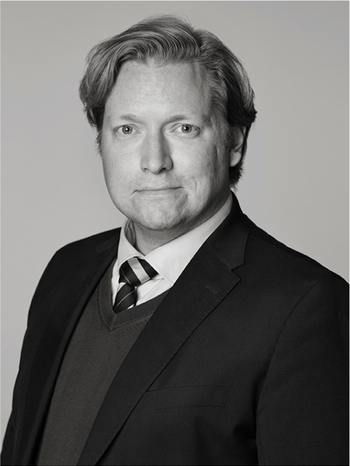A CARPET, "Skissmattan", knotted pile, ca 159,5 x 101,5 cm, signed MMF
(Märta Måås-Fjetterström). Designed in 1925. Woven before 1942. (Rare).
Little partly a litte harder wear, minor stains. The sides and ends have minor fold wear, slightly damaged and ribbon lined ends, all fringes are missing.
Provenance
The collection of Mr. George N. Jeppson, Massachusetts, USA; by descent.
Bought at Bukowskis Important Winter Sale 605, Catalogue number 196, December 2017.
More information
"Skissmattan" has only been woven nine times.
The lot was originally part of the George N. Jeppson collection in Worcester, Massachusetts, USA.
When George N. Jeppson passed away in 1962, he was regarded as one of America's most prominent Swedish Americans. His father, originally from Höganäs, Skåne, in the south of Sweden emigrated to Massachusetts, and founded the successful abrasives manufacturing company Norton Co., in which George, after studies at the Royal Institute of Technology in Stockholm, pursued a career. Jeppson advanced within the company and after several years as managing director, he became president in 1941 and later CEO.
George N. Jeppson placed great importance on his Swedish origins and heritage, and for his contributions to the economic and cultural relations between the United States and Sweden, he received a number of official awards and recognitions. In conjunction with the 1938 celebration marking the 300-year anniversary of the founding of the New Sweden colony on the eastern coast of North America, he was appointed to commander of the Royal Order of Vasa.
The Jeppson family home in Worcester, Massachusetts, which, among other prominent guests, was visited by Prince Bertil of Sweden, displayed Swedish art and crafts of the highest quality. The art collection contained important works by Gustaf Fjæstad and Bruno Liljefors, acquired by Fritzes Kungl. Hovbokhandel in Stockholm and then shipped to USA with S.S. Kungsholm. Some of the most impressive elements of the interior of the house, however, were the carpets by Märta Måås-Fjetterström in Båstad. The carpets are early and, in some cases, unique specimens manufactured under the supervision of Måås-Fjetterström herself in 1936. In addition, a number of these were also custom made and had been designed based on Jeppson's specific wishes, as evidenced by preserved correspondence with MMF.






































